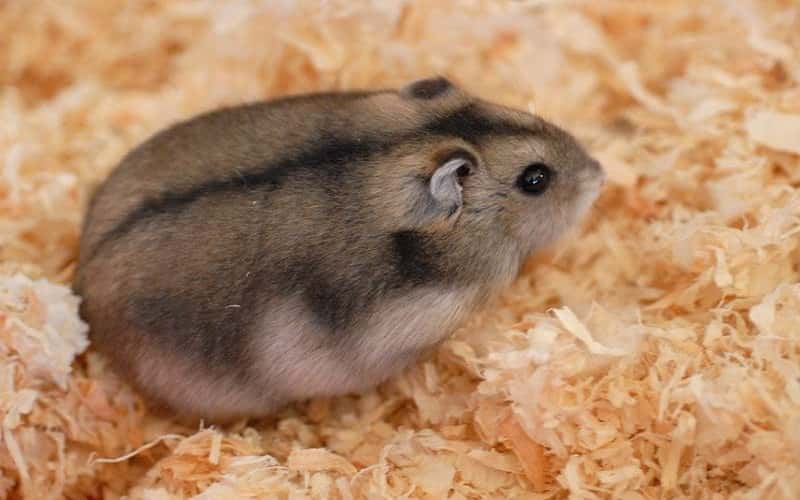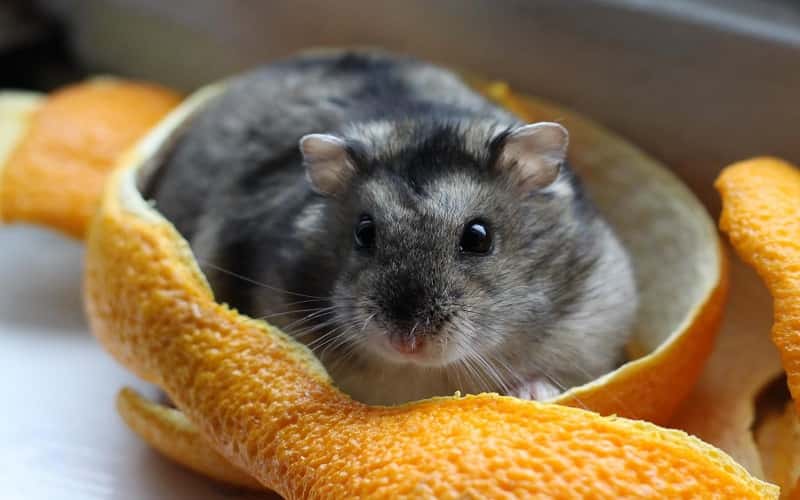Dwarf hamster are adorable little creatures that make great pets. They are smaller than regular hamsters and have unique characteristics that set them apart. In this article, we will explore everything you need to know about dwarf hamsters, including their physical characteristics, habitat, behavior, lifespan, breeding, and reproduction.
We will also discuss how to take care of them properly, common health issues they may face, and provide some interesting fun facts about these tiny companions.
Introduce about Dwarf Hamster
What is a Dwarf Hamster?
Dwarf hamsters belong to the Phodopus genus and are small rodents native to various parts of Asia, such as Siberia, Mongolia, and China. They are popular pets due to their compact size and adorable appearance.
There are several species of dwarf hamsters, including the Campbell’s dwarf hamster, Winter white dwarf hamster, Roborovski dwarf hamster, and Chinese dwarf hamster.
See More Hamster Breeds
Physical Characteristics
Dwarf hamsters typically measure around 2 to 4 inches in length and weigh between 0.5 to 1.5 ounces, depending on the species. They have a round body shape with short legs and a stubby tail. One notable physical characteristic of dwarf hamsters is their prominent cheek pouches, which they use to store food.
Habitat and Natural Environment
In the wild, dwarf hamsters inhabit burrows located in grasslands and semi-desert regions. These burrows provide them with protection from predators and serve as shelter from harsh weather conditions. Dwarf hamsters are skilled diggers and create complex tunnel systems within their burrows.

Behavioral Characteristics
Dwarf hamsters are generally nocturnal creatures, which means they are most active during the night. They have excellent hearing and sense of smell, allowing them to navigate their surroundings effectively. These small rodents are known for their agility and can move quickly, making them quite entertaining to watch.
Size of Dwarf Hamster
As mentioned earlier, dwarf hamsters range in size depending on the species. Campbell’s dwarf hamsters and Winter white dwarf hamsters are slightly larger, while Roborovski dwarf hamsters are the smallest, measuring only about 2 inches in length.
Dwarf Hamster Lifespan
On average, dwarf hamsters live between 1.5 to 3 years. However, with proper care and a healthy diet, some individuals have been known to live up to 4 years. Their lifespan may vary based on genetics, environment, and overall well-being.
Dwarf Hamster Breeding and Reproduction
Dwarf hamsters reach sexual maturity at around 5 to 7 weeks of age. It is important to separate males and females once they become sexually mature to prevent unwanted litters.
The gestation period for dwarf hamsters is approximately 18 to 21 days, after which the female gives birth to a litter of adorable baby hamsters. These tiny babies are born hairless and blind but develop rapidly within a few weeks.
Take Care Of Dwarf Hamster
Common Health Issues
While dwarf hamsters are generally hardy animals, they can still experience health issues. Some common health problems include respiratory infections, wet tail (a bacterial infection), dental problems, and obesity. It is crucial to monitor your hamster’s health closely and seek veterinary care if you notice any signs of illness.
Choosing the Right Sized Cage and Bedding
When selecting a cage for your dwarf hamster, ensure it provides enough space for them to explore and exercise. Wire cages with narrow bar spacing are recommended to prevent escapes. Avoid using cages with plastic components, as hamsters may chew on them and potentially ingest plastic, leading to health complications.
As for bedding, opt for a safe and absorbent material such as aspen shavings or paper-based bedding to create a comfortable and hygienic environment.
Appropriate Diet and Feeding Schedule
A well-balanced diet is crucial for the overall health of your dwarf hamster. Their diet should primarily consist of high-quality hamster pellets or lab blocks, supplemented with fresh fruits, vegetables, and occasional treats.
Avoid feeding them sugary or fatty foods, as they can lead to obesity and other health issues. Fresh water should always be readily available in a sipper bottle attached to the cage.
Regular Exercise and Playtime
Dwarf hamsters are naturally active animals and require opportunities for exercise and mental stimulation. Provide an exercise wheel or hamster ball for them to burn off excess energy.
Additionally, you can let your hamster explore a safe, enclosed space outside of their cage under close supervision. Remember to remove any potential hazards and ensure the area is escape-proof.
Common Health Issues
Signs of Illness
It is important to be aware of signs that may indicate your dwarf hamster is unwell. Thesesigns include changes in appetite, weight loss, lethargy, hunched posture, abnormal discharge from the eyes or nose, diarrhea, excessive itching or scratching, and difficulty breathing. If you observe any of these symptoms, it is crucial to seek veterinary care promptly.
Preventative Measures
To maintain your dwarf hamster’s health, there are several preventative measures you can take. Ensure their cage is kept clean and free of waste to minimize the risk of bacterial infections. Provide a balanced and nutritious diet to support their immune system.
Avoid sudden temperature changes and keep their environment at a comfortable temperature range of 65-75°F (18-24°C). Regularly handle and interact with your hamster to monitor their behavior and detect any abnormalities early on.

Treatment Options
If your dwarf hamster does develop a health issue, it is essential to consult a veterinarian experienced in small animal care. They will be able to diagnose the problem and recommend appropriate treatment options. Medications such as antibiotics, anti-inflammatory drugs, and supportive care may be prescribed based on the specific condition.
Fun Facts about Dwarf Hamster
Unique Characteristics
Dwarf hamsters have some unique characteristics that make them fascinating pets. One interesting feature is their ability to store food in their cheek pouches, allowing them to gather and transport food efficiently. These pouches can expand to almost double the size of their heads!
Interesting Behaviors
Dwarf hamsters exhibit various interesting behaviors. They are known for their burrowing instincts and will spend hours digging tunnels and creating intricate underground systems. Additionally, they enjoy climbing, running on exercise wheels, and engaging in interactive play with toys.
Unusual Habits
One unusual habit of dwarf hamsters is their tendency to hoard food. They will collect excess food and store it in different areas of their enclosure, mimicking their natural behavior in the wild. This behavior ensures they have a stash of food during times of scarcity.
How Many Types of Dwarf Hamsters
There are several types of dwarf hamsters, each with its own unique characteristics. Campbell’s dwarf hamster, also known as the Russian dwarf hamster, is one of the most common and comes in various coat colors, including gray, brown, and white.
Winter white dwarf hamsters, also called Djungarian hamsters, can change their fur color seasonally, turning white during winter months. Roborovski dwarf hamsters are the smallest and fastest of the dwarf hamster species, known for their quick movements and sandy-colored fur. Chinese dwarf hamsters have a slender body shape and a longer tail compared to other dwarf hamsters.
Dwarf Hamsters as Pets
Dwarf hamsters make delightful pets for both children and adults. They are relatively low-maintenance and can be easily handled once they become accustomed to human interaction. However, it’s important to note that they are small and delicate creatures, requiring gentle handling and supervision, especially when children are involved.
Interactions with Other Pets and Humans
While dwarf hamsters enjoy human companionship, they are primarily solitary animals and should be housed individually to avoid potential conflicts or injuries.
If you have other pets, such as cats or dogs, ensure they cannot access the hamster’s enclosure, as they may view the hamster as prey. Always supervise interactions between your hamster and other pets to ensure the safety of all involved.
Training and Handling Techniques for Dwarf Hamster
Dwarf hamsters can be trained to some extent using positive reinforcement techniques. You can teach them simple tricks like coming to your hand for treats or responding to a specific command. However, patience and consistency are key, as each hamster has its own personality and learning pace.
Dwarf Hamster Gender Differences
Male and female dwarf hamsters have distinct physical traits that allow for easy gender identification. Males typically have a more prominent and rounded rear end, while females have a smaller and more tapered appearance. Additionally, males have scent glands located on their flanks that they use to mark their territory.
Different Varieties and Colors of Dwarf Hamster
Dwarf hamsters come in a variety of colors and coat patterns, adding to their charm as pets. Depending on the species and individual genetics, you can find dwarf hamsters with coats ranging from solid colors like black, white, or gray to patterns such as spots, stripes, and even banded fur.
Comparison of Dwarf Hamster with Other Hamster Breeds
While dwarf hamsters share some similarities with other hamster breeds, such as their love for burrowing and nocturnal nature, there are distinct differences between them.
Dwarf hamsters are generally smaller in size compared to Syrian hamsters, which are the largest hamster breed. They also have different care requirements and behaviors, making them unique in their own right.
Conclusion
Dwarf hamsters are captivating pets that bring joy and entertainment to their owners. By understanding their characteristics, providing proper care, and beingaware of potential health issues, you can ensure a happy and healthy life for your dwarf hamster. Remember to provide them with a suitable habitat, a balanced diet, regular exercise, and mental stimulation. Keep an eye on their health and seek veterinary care when needed.
Dwarf hamsters have unique behaviors and habits that make them fascinating to observe. From their cheek pouches and burrowing instincts to their food hoarding tendencies, they exhibit interesting behaviors that showcase their natural instincts. With proper handling and training, you can develop a strong bond with your dwarf hamster.
It’s important to remember that each species of dwarf hamster has its own specific needs and characteristics, so it’s essential to research and understand the requirements of the particular species you choose as a pet. Whether you opt for a Campbell’s dwarf hamster, Winter white dwarf hamster, Roborovski dwarf hamster, or Chinese dwarf hamster, providing a loving and nurturing environment is key to their well-being.
In conclusion, dwarf hamsters are delightful pets that bring joy and companionship to many households. By understanding their characteristics, providing proper care, and appreciating their unique habits, you can create a fulfilling and enriching experience for both you and your tiny furry friend.
Source: https://petscaretip.com/
